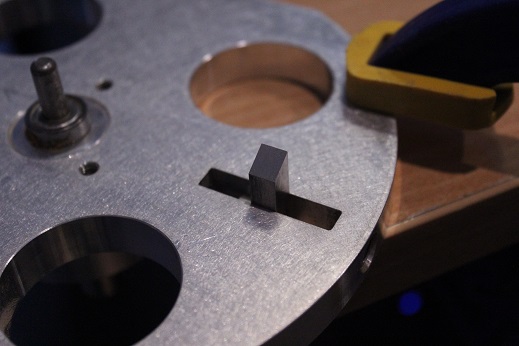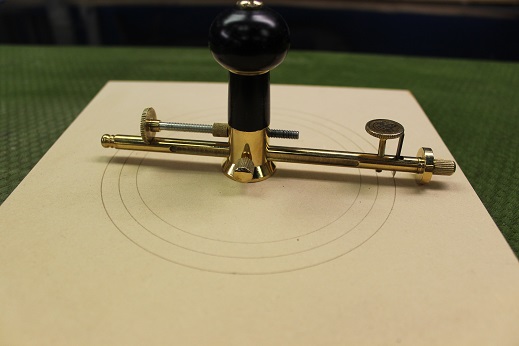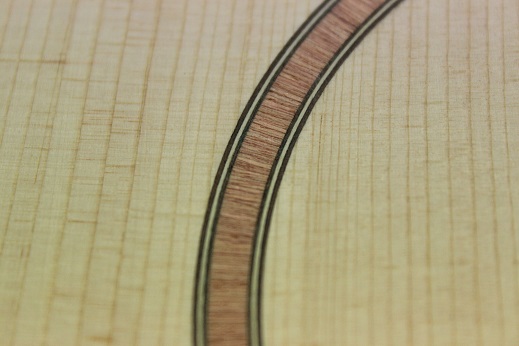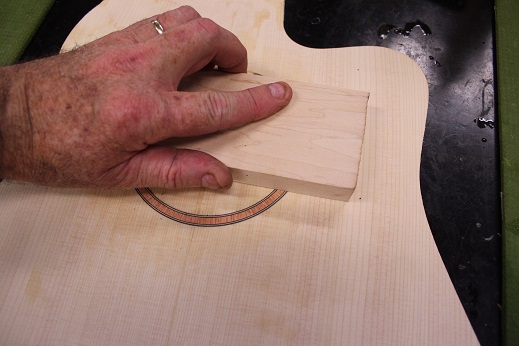
 |
|
#1
|
|||
|
|||
|
What is the preferred way to cut the very narrow channels for the inner and outer single purfling rosette rings for a Martin D-18 style build? These seem to be around .025" or so in width and I can purchase an end mill in this size but was curious if there have been successes with using a custom ground blade of some sort to mount in a hand circle cutter.
|
|
#2
|
|||
|
|||
|
I use a circle cutter, you can replace the cutters with any size blade, make for a super clean cut
Here are two that i use. Steve  
__________________
Cole Clark Fat Lady Gretsch Electromatic Martin CEO7 Maton Messiah Taylor 814CE |
|
#3
|
|||
|
|||
|
Nice looking circle cutters! I'll grind out a cutter from some hardened steel blanks and give my hand cutter a try. I had no idea you could use a chisel shaped cutter and achieve a precise clean cut.
What bevel angle should I use? Thanks! |
|
#4
|
|||
|
|||
|
Any angle you want,
Here is an up close view of a scraped slot 
__________________
Cole Clark Fat Lady Gretsch Electromatic Martin CEO7 Maton Messiah Taylor 814CE |
|
#5
|
|||
|
|||
|
You can make a blade for a hand circle cutter that is the same thickness as the line you want to inlay. Then all you need to do is reverse it to make the opposite cut, obviating the chance of messing up the adjustment of the diameter. I like to make the channel a few mil over the actual width of the inlay, since the wood will swell when the glue hits it. An exact sized channel can leave you looking for a hammer at the last minute to force the inlay in, and I've had inlay lines fold up when trying to force them into a tight channel.
|
|
#6
|
|||
|
|||
|
I located a video by Obrien (Tips du Jour) and he mentioned using a 30 degree angle and to relieve the cutter sides at a 3 degree angle.
Does that fall in line with your cutter geometry? |
|
#7
|
|||
|
|||
|
So, with hand routing, I'm assuming when you mention "reverse it to make the opposite cut", this is to cut away from the grain only, requiring one to not try and cut through a full 360 degrees when starting the first pass?
|
|
#8
|
|||
|
|||
|
Quote:
Alans comments re making the route slighty larger are very valid, glue makes the wood swell, I block and rub it down to set my rosettes Example  Steve
__________________
Cole Clark Fat Lady Gretsch Electromatic Martin CEO7 Maton Messiah Taylor 814CE Last edited by mirwa; 05-06-2019 at 08:42 AM. |
|
#9
|
|||
|
|||
|
I like the blocking technique you're using. Less chance of folding over the veneers while pressing down in the channel.
I made an .025" cutter with 30 degree angle and sharpened to a mirror finish. Unfortunately, even with extremely light downward pressure, it would cut fine at the point where it was running parallel with the grain but when going across them at any angle, it tended to bind up when hitting each growth ring. On my test cuts, I was able to cut a channel but in a few areas, it produced some small tearouts. Has anyone experienced this with small cutters? Link to photos of cutter. Couldn't get shutterfly url to show actual photos using "insert image" feature. https://pix.sfly.com/PxPkPv Last edited by albartee; 05-11-2019 at 08:18 AM. |
|
#10
|
|||
|
|||
|
Please delete this post. Couldn't find the delete function
Thanks Last edited by albartee; 05-11-2019 at 08:16 AM. |